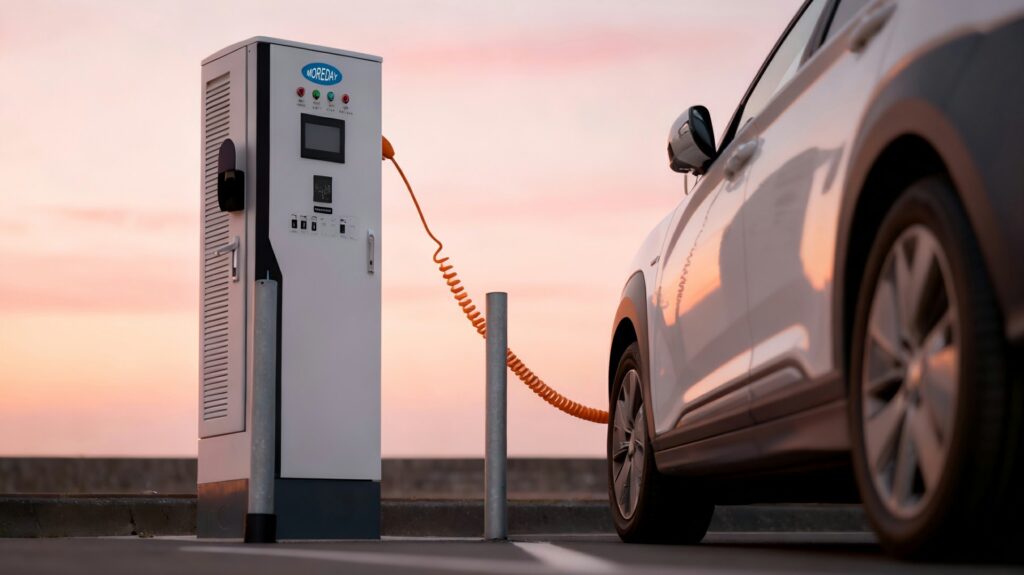As electric vehicles (EVs) become more common, one question often arises: How do DC fast chargers actually work?
We plug them in and see our EV batteries fill up quickly—but what’s happening behind the scenes? In this article, we’ll explore how DC fast chargers operate, how they differ from home AC chargers, and what makes them so powerful for modern EV infrastructure.
Table of Contents
Toggle1. Understanding the Basics: AC vs. DC Charging
To understand DC fast charging, it’s important to start with the difference between AC (Alternating Current) and DC (Direct Current) electricity.
- AC Power is what you get from the electrical grid and your household outlets.
- DC Power is what your EV battery uses to store and deliver energy.
When you use a Level 1 or Level 2 AC charger, the vehicle’s onboard charger must convert AC to DC to store energy in the battery. This conversion takes time and limits charging speed.
A DC Fast Charger, on the other hand, bypasses the onboard charger. It converts AC to DC inside the charging station and sends DC power directly to the EV’s battery.
This is why DC charging is so much faster—because the conversion happens outside the car, with much higher power levels.
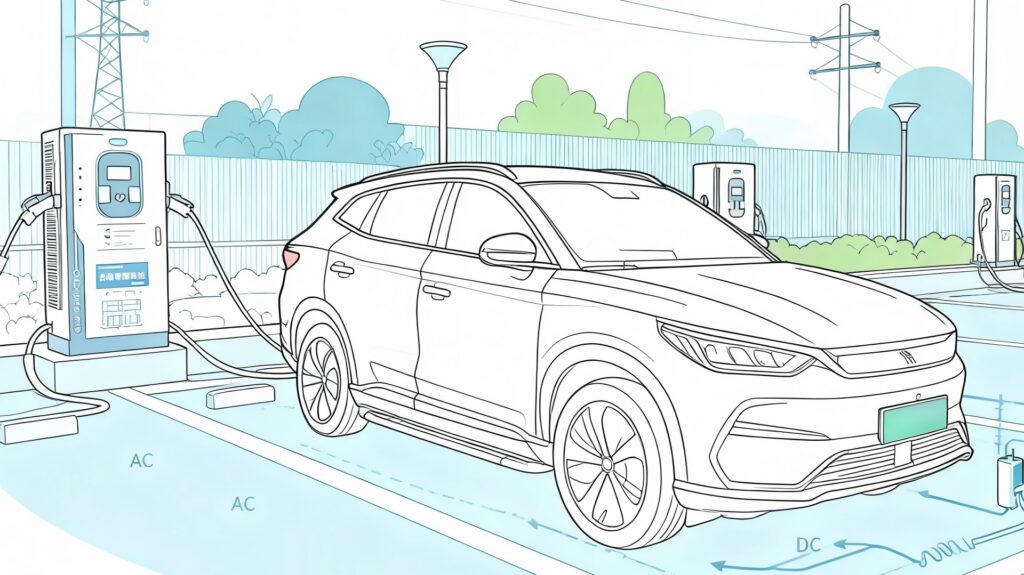
2. How a DC Fast Charger Works Step by Step
Let’s break down the process into simple steps:
Grid Connection
The DC fast charger connects to the electrical grid or sometimes to a local renewable energy system like a solar PV array.
In many modern systems—such as MOREDAY’s integrated PV + Energy Storage + EV Charging solutions—the charger can draw power directly from renewable sources or stored energy, reducing strain on the grid.
AC to DC Conversion
Inside the charger, a rectifier module converts incoming AC electricity into DC.
This module uses high-efficiency power electronics and cooling systems to handle large power flows safely and stably.
Voltage and Current Control
The charger’s internal control system monitors the EV battery’s state of charge, voltage, and temperature.
Based on these parameters, it adjusts voltage and current dynamically to optimize charging speed and protect the battery’s lifespan.
Communication with the Vehicle
Before power flows, the charger and the EV communicate using standardized protocols (like CHAdeMO, CCS, or GB/T).
This ensures that the vehicle and charger agree on parameters such as voltage, current, and maximum charging limits.
Battery Charging Phase
The charger then delivers direct DC power into the EV’s battery.
Charging typically occurs in two stages:
Constant Current Stage: Fast charging at maximum power.
Constant Voltage Stage: Slower charging as the battery nears full capacity.
Session End and Safety Check
Once the desired charge level is reached, the system automatically stops the current and performs final safety checks before disconnecting.
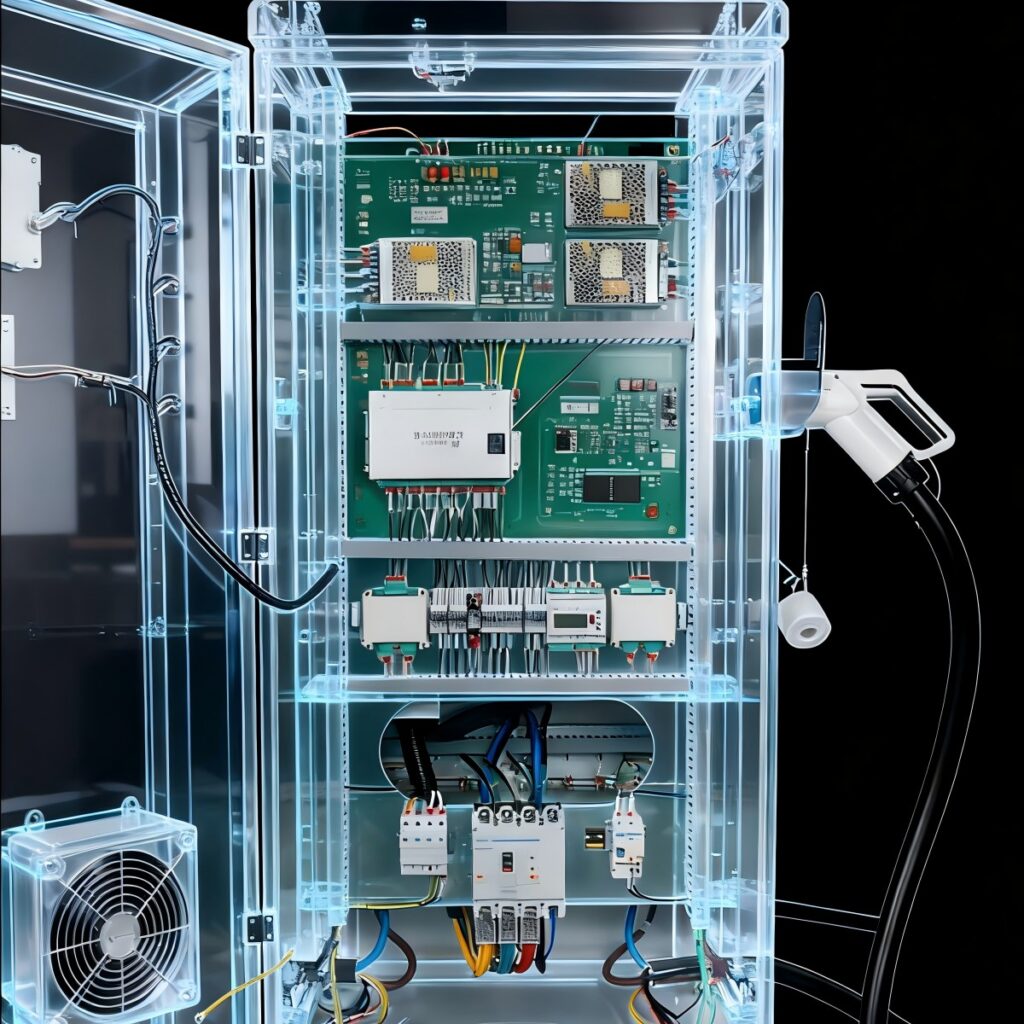
3. Key Components Inside a DC Fast Charger
A DC fast charger is more than a power plug. It’s a sophisticated system made up of several components:
- Rectifier Unit: Converts AC to DC power efficiently.
- Control Unit: Communicates with the vehicle and manages charging parameters.
- Cooling System: Keeps components at safe operating temperatures.
- Power Modules: Allow flexible scaling of output power (e.g., 30kW, 60kW, 120kW, etc.).
- Protection and Monitoring Systems: Ensure safety against overvoltage, short circuit, or overheating.
MOREDAY’s DC Fast Charger series integrates smart monitoring, modular design, and high-efficiency cooling to ensure long-term reliability in both commercial and public charging networks.
4. Why DC Fast Charging Matters
DC fast charging plays a crucial role in the EV ecosystem because it solves one of the biggest challenges for EV users—charging time.
- Speed: It can recharge an EV battery from 20% to 80% in around 20–40 minutes.
- Convenience: Perfect for long-distance travel and fleet operations.
- Scalability: Suitable for commercial EV charging stations, highway rest stops, and urban hubs.
When paired with energy storage systems—like MOREDAY’s 51.2V-280Ah LiFePO₄ storage modules—DC chargers can even operate during grid peaks or outages, providing more stable and sustainable power delivery.
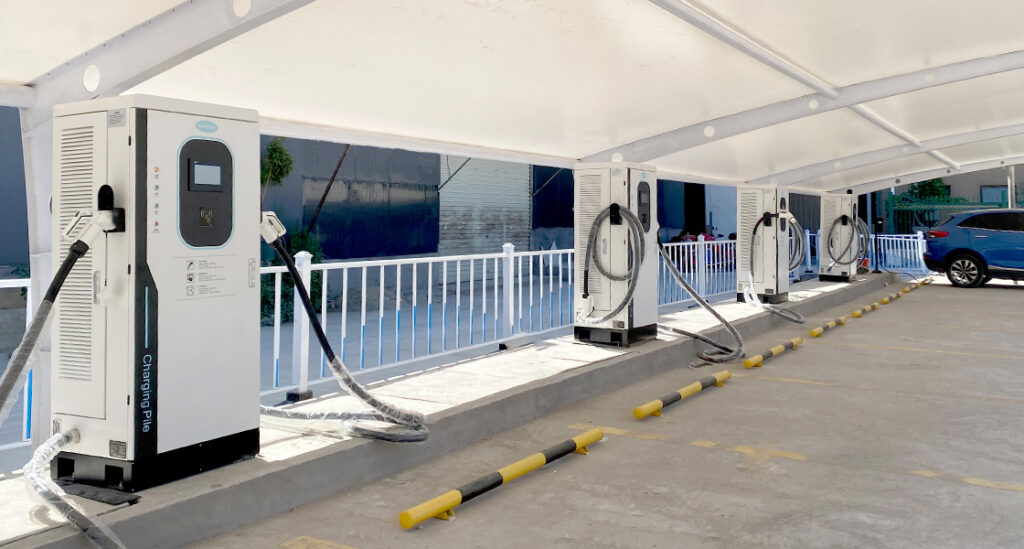
5. Challenges and Smart Solutions
While DC fast chargers are powerful, they also come with challenges:
- High Installation Cost: They require heavy electrical infrastructure.
- Grid Load Impact: Large power draw can stress local grids.
- Heat Management: High-power electronics generate substantial heat.
Modern systems address these challenges with smart load management, integrated battery storage, and renewable energy integration.
MOREDAY’s intelligent charging solutions use energy management systems (EMS) to balance power between PV, storage, and grid sources, making charging more efficient and eco-friendly.
6. The Future of DC Fast Charging
As battery technology evolves, we’re seeing faster and more efficient charging standards emerge, such as ultra-fast 350kW chargers and solid-state battery compatibility.
- Solar-powered charging hubs combining PV panels, MOREDAY combiner boxes, and energy storage units.
- Smart network management for real-time monitoring and maintenance.
The trend is clear: DC fast charging will not only make EV travel faster—it will make energy use smarter and greener.
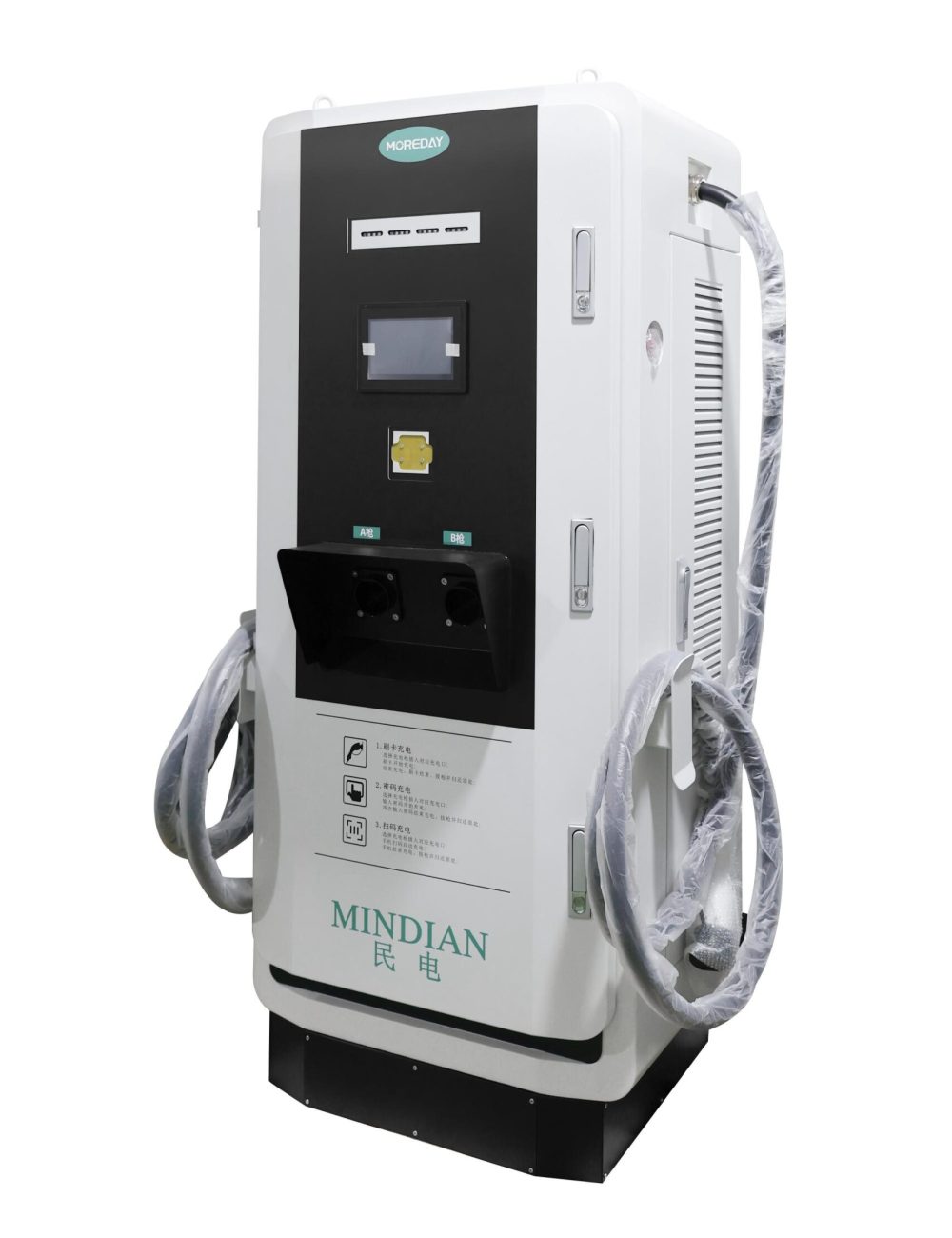
Conclusion
DC fast chargers are the backbone of the EV revolution—transforming how we travel, charge, and think about energy.
By converting AC to DC directly within the charger, they drastically reduce charging time and open new opportunities for sustainable mobility.
With integrated renewable energy and storage systems like those from MOREDAY, the future of EV charging is not just fast—it’s intelligent, green, and reliable.
FAQ
Most EVs can reach 80% charge in 20–40 minutes, depending on battery size and charger power.
Not all. The vehicle must support a DC charging standard like CCS, CHAdeMO, or GB/T.
Frequent DC charging can slightly increase battery wear, but modern systems manage temperature and current to minimize impact.
The higher the power rating, the faster the charge—provided the vehicle supports it.
Yes. When integrated with solar systems and energy storage—like MOREDAY’s PV + ESS + EV Charger setups—they can operate sustainably even off-grid.
Consider your expected traffic, vehicle types, and available power supply. MOREDAY provides modular solutions from 30kW to 180kW, adaptable to commercial and public settings.

